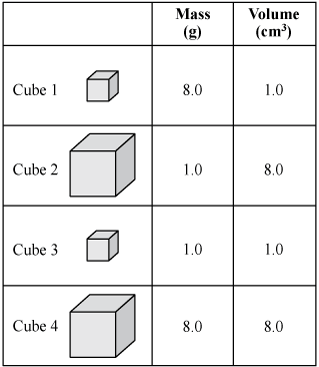the smallest unit of life
cell
What is an atom?
An atom is the smallest unit of an element.
Systems and devices that move goods and people from one place to another.
Transportation
Conditions of the atmosphere over a long period of time.
Climate
What force holds the solar system together?
Gravity
How many chromosomes do humans have?
46
What is an endothermic chemical reaction?
thermal energy is absorbed from the environment
Devices that are not powered by electricity or gas.
Hand tools
Zone where a warm air mass replaces a cold air mass.
Warm Front
What causes uneven heating of the earth and causes seasons?
Earth's Tilt
What is the shape of a DNA.
A double helix .
What are the properties of waves
Frequency, Amplitude, Wavelength, Crest, Trough
What is an engineering design process?
An engineering design process is a series of steps that engineers use to create products.
When two tectonic plates come together -Creates mountains, volcanos, and trenches.
Convergent Boundary
What are some human activities that contribute to rising global temperatures and increased flooding? Mention 3
Fossil fuel combustion, Deforestation, agricultural activity
What structure in the nucleus of the cell holds the DNA
Chromosomes
Explain the law of inertia, mention 1 example
An object at rest will remain at rest unless acted on by an unbalanced force. Example: The sudden application of brakes in a vehicle.
What is the difference between tension and torsion?
Tension is a stretching or pulling force. Torsion is a twisting force.
Rock born from extreme heat and pressure.
Metamorphic Rock
Relative ages of rock layers- the oldest rock layers will be at the bottom.
Laws of Superposition
What are the 3 types of symbiotic relationships? Explain each one
Mutualism: Both species benefit
Commensalism: One species benefits, the other is neither harmed nor benefited
Parasitism: One species (the parasite) benefits and the other (the host) is harmed
The table below shows the masses and volumes of four cubes made of different materials.

Which cube has the greatest density? and why?
A.cube 1
B.cube 2
C.cube 3
D.cube 4
cube 1. Because its density is 8g/cm3
What are the 4 parts of a structure?
*Siding: Protects the outer walls from weather
*Insulation: PRevents the exchange of heat energy
*Foundation: Provides support. The basement of the structure
*Framing: Provides structure and support like skeleton
What are the 3 most common greenhouses gases?
Carbon dioxide, Methane and Water vapor
what are the 3 ways thermal energy is transferred?
*Conduction: Direct contact
*Convection: Through matter that can flow
*Radiation: Through waves (No direct contact)